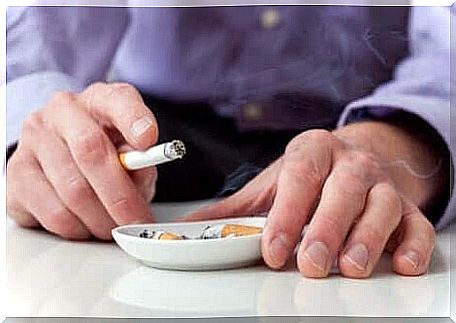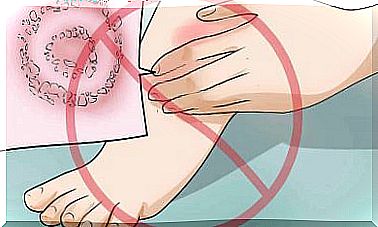7 Measures To Reduce Stroke Risk

A stroke occurs when the blood supply to part of the brain becomes inadequate or cut off. As a result, neurons can be damaged or even die. To avoid this, here are some measures to reduce the risk of stroke.
According to a study published by the Journal of Neurology , men are the population group most at risk of having a stroke. In women, however, the incidence increases sharply with age.
In fact, according to the Spanish Journal of Cardiology (Spanish link), this disease is the first specific cause of death among women in Spain. What does the disease consist of? How do you reduce the risk of suffering from it? Read on to discover the answers to these questions!
What is a stroke?
A stroke is a cerebrovascular disease that affects the blood vessels that supply blood to the brain. A stroke occurs when a blood vessel breaks or becomes blocked by a clot or other particle.
As described in an article in the MSD Handbook, as a result of this rupture or blockage, part of the brain is not getting the blood, oxygen and glucose flow it needs. As a result, the nerve cells in the affected brain area are deprived of oxygen. As a result, they cannot function and die within a few minutes.
The risk factors

Most strokes can be avoided. To do this, it is necessary to adopt lifestyle habits that minimize risk factors. According to the MSD Handbook article we cited above, the most common ones are:
- Hyperlipidemia. High cholesterol is one of the main risk factors for stroke.
- To smoke. According to the Spanish Brain Injury Federation (link is Spanish), several studies point to nicotine, oxidizing gases and carbon monoxide found in tobacco as culprits in the direct relationship between smoking and an increased risk of stroke.
- Diabetes. This disease increases the risk of stroke, especially type 2 diabetes.
- old age. Three quarters of strokes affect patients over the age of 65, according to a study published in Anales del Sistema Sanitario de Navarra (Spanish link).
- Suffering from high blood pressure. High blood pressure is the risk factor that most contributes to stroke.
- Drinking too much alcohol.
- Finally, family heritage and race. A person’s risk of having a stroke is higher if one of their relatives has had one.
Measures to reduce the risk of stroke
Because there are still a number of risk factors, you should focus on the factors that can be adjusted to reduce the risk of stroke. Here are some of the most important measures to prevent stroke, which are the following:
1. Following a Healthy Diet

As stated by the World Health Organization, a varied and healthy diet, focusing especially on low-salt and low-fat foods, contributes to the prevention of diabetes and heart disease, among other conditions.
That is why you should also include fruits, vegetables and whole grains in your diet in addition to fish. It is advisable to consult a nutritionist to get a specific diet for your personal needs.
2. Sports
A study published by the journal Neurology in 2012 (Spanish link) indicates that it is important to exercise regularly to reduce stroke risk factors. You just need to move moderately. In fact, walking for an hour a day is enough, although vigorous exercise or sports can enhance these benefits.
3. Quit Smoking
Quitting smoking is one of the essential requirements to avoid having a stroke. While this is a challenging process for many people, several health insurers offer invaluable advice and assistance in achieving this goal.
4. Monitor your blood pressure
It is necessary to keep your blood pressure at a healthy level. High blood pressure is an important risk factor for stroke.
5. Keeping Your Cholesterol Under Control
Healthy cholesterol levels are also one of the keys to avoiding stroke. In this regard, the Heart Foundation indicates that high cholesterol, hypercholesterolemia, is a cholesterol level of more than 200 mg/dl.
According to an article from the Mayo Clinic (English link), high cholesterol requires dieting, exercise and in some cases even taking medication. Of course, a medical professional should assess this.

6. Control your blood sugar level
Your blood sugar should also be within the healthy range recommended by health authorities and specialists. Diabetics should monitor the treatment closely so that they do not have episodes of hyperglycemia.
7. Reduce your alcohol consumption
Your alcohol consumption should be moderate. In fact, you should avoid it altogether if there are one or more risk factors for having a stroke.
Stroke Preventive Measures: Habits Are Key
Remember, a healthy lifestyle significantly reduces the risk factors for this disease. Therefore, measures such as a good diet and regular exercise significantly lower the risk of stroke. Quitting smoking and drinking also makes a big difference.
All these measures require a daily commitment. In addition to the medicines a doctor may recommend in certain circumstances, it is each person’s effort to live a healthier life that will really make a difference.








